As Christmas draws near, explore our comprehensive guide to holly trees and hedging. Here we offer insights into the classic Common holly (English holly), as well as information on non-native options such as Ilex ‘Nellie R. Stevens’.
Common Holly (Ilex aquifolium) is a slow-growing, medium-sized evergreen native to the UK. It is known for its dense crown, which is upright in its youth and develops a rounded, cone-like shape as it matures.
This holly variety has dark, glossy leaves that feature a distinctive wavy margin with sharp spines. It also has small white flowers that emerge between May and June, and bright red berries on pollinated female plants from September through early spring. These berries provide gardens with a vibrant splash of classic Christmas colours, which is what makes Holly so popular during the festive season!
Holly is notably tolerant of both partial and full shade and demonstrates good drought resistance once established. Its resilience and native status make it an excellent choice for a wide range of locations where non-native plants may not be preferred. This is a remarkably hardy variety that thrives in most well-drained soil types, including clay, chalk, and acidic soils. Holly also exhibits good resistance to honey fungus and blends well with other evergreen species like laurel and privet.
We highly recommend Holly, having ranked it among our top 10 evergreen hedges for its exceptional qualities.
Requiring minimal upkeep and exhibiting a steady growth rate of 10-20cm annually, to a potential height of 4m, Holly is an excellent choice for creating a substantial hedge.
Beyond its aesthetic appeal, Holly boasts remarkable practicality. Its wood is notably strong and flexible, enabling it to withstand harsh weather conditions such as strong winds and heavy snowfall. This makes a Holly hedge a versatile solution for various needs, including effective windbreaks, protection in maritime environments, formal garden designs, and even as a natural intruder deterrent.
If you’re looking for a resilient and attractive hedging option that provides constant cover, Holly is a superb choice.
Holly is a fantastic addition to any garden, offering benefits that extend far beyond just the Christmas season (especially to wildlife). Its summer flowers are a magnet for bees, butterflies, and other important pollinators, which are crucial for a flourishing garden. Additionally, the plant’s spiky leaves deter predators so this tree is an ideal for nesting sites for birds and other animals looking for shelter and protection. The berries that appear later in the year also provide a valuable food source for birds during the late winter months, particularly after frosts have softened them. Importantly, holly berries are also safe around farm animals and horses, allowing you to plant them with peace of mind!
Ilex ‘Nellie Stevens’ is a self-pollinating hybrid of our native English holly, this means that it will bear red berries regardless of whether the plant is male or female. It is not native to the UK.
Hopefully this comprehensive guide to holly trees and hedging helped. If you have a specific question, please get in touch by calling the Tree Nursery or drop us an email.
2. Best Trees for Privacy: Before and after planting!
3. 10 Trees for Small Gardens!
4. Tree Planting Kits: Give your newly planted tree the best start!
5. How to Water Newly Planted Trees
Wondering if pleached Hornbeam trees are good for privacy? Take a look at this recent planting project where we used pleached Hornbeam to create a natural screen in the garden of a new home. The goal was simple: block views from neighbouring windows and increase privacy without taking up much space.
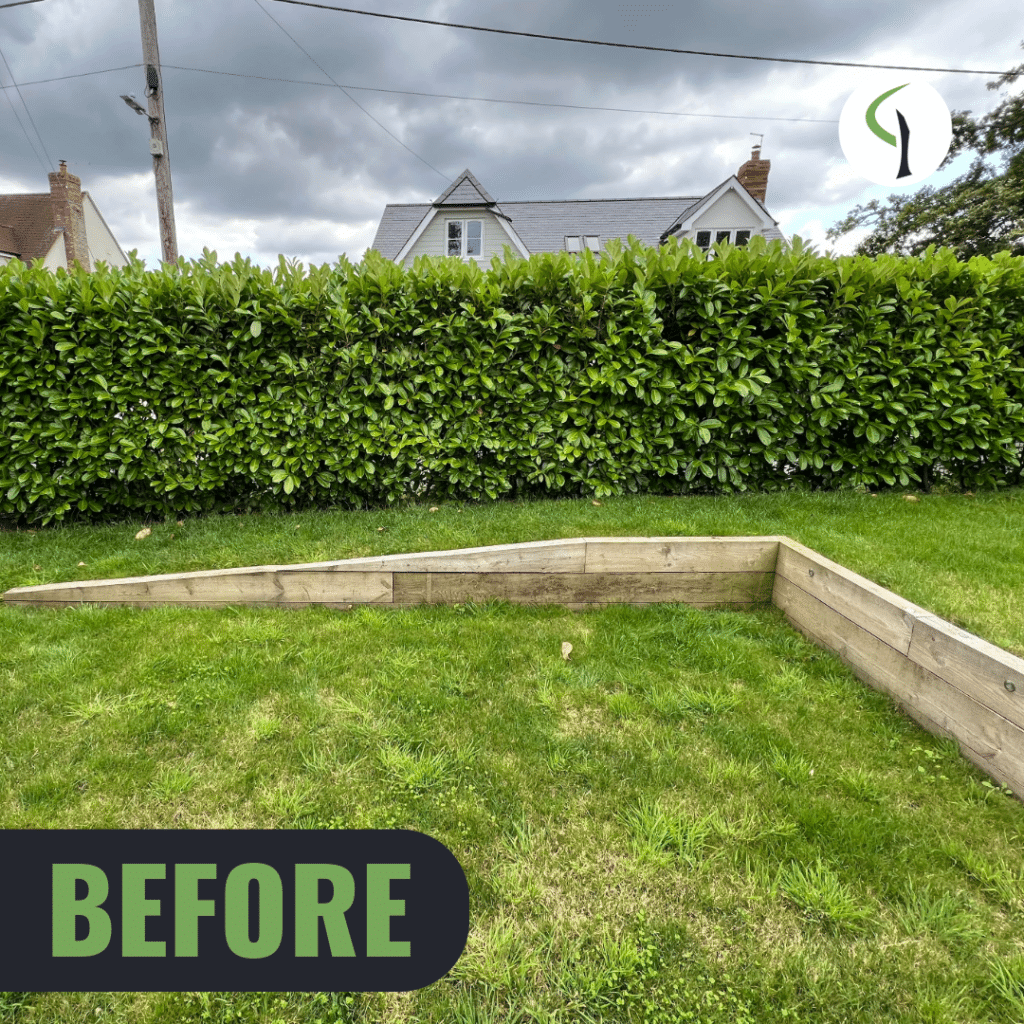
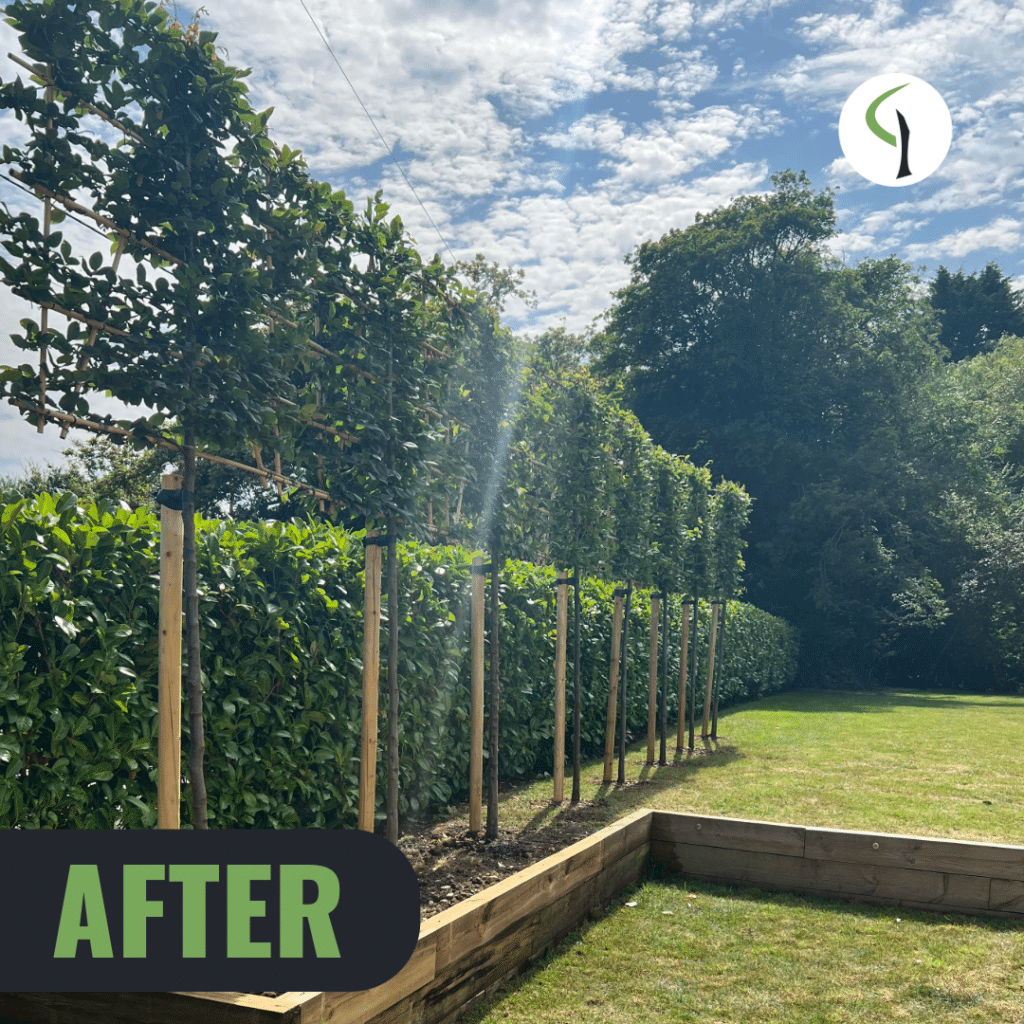
Choosing the right trees depends on your goals, space and soil conditions. In this case, the customer needed screening that wouldn’t encroach on the rest of their garden. A clear stem design was ideal, keeping lower branches above fence height. Pleached trees offered a neat, upright structure that fits tight spaces.
We also had to work with heavy clay soil near a mature Oak. Taking all this into account, Hornbeam (Carpinus betulus) was the best choice. It grows well in clay and delivers strong screening, especially when shaped as pleached trees.
So, how effective are Pleached Hornbeam in these conditions? Very. They offer solid seasonal coverage while staying tidy and manageable. Although Hornbeam is a deciduous tree, it’s can be classed as semi-evergreen. In milder winters, it holds onto its crisp brown leaves, maintaining privacy even during the colder months.
Hornbeam only needs two light trims a year, perfect for this customer who was after low-maintenance trees. These light trims help with formative pruning, encouraging the trees to form a dense, raised hedge within a few seasons. The result is a neat, structured screen that hides unsightly views. It works especially well in spring and summer, but even in winter, as the retained brown leaves provide partial screening while allowing extra light into ground-floor window.
Although this article is focused on explaining how effective pleached Hornbeam are at creating privacy, we also offer evergreen alternatives for year-round coverage. Options like Photinia ‘Red Robin’ and Cherry Laurel keep their leaves through winter and deliver reliable screening in all seasons. Check out our full range of pleached trees.
1. A Guide to Leylandii: Is it good for screening?
2. A Guide to Screening Trees: Is Photinia Good for Natural Privacy?
3. A Guide to Tree Planting: Is Summer a good time to plant?
Looking to establish a native hedge on a tight budget? Bare root plants are a smart, cost-effective choice. Sold without soil around their roots, they’re lighter, easier to handle, and much cheaper than container-grown alternatives. They’re a particularly budget-friendly option.
Bare root plants are grown in a field and then lifted during the dormancy period, which typically runs from November to March. Since they are supplied without pots or compost, they cost up to 70% less than those grown in containers. Their lower weight also means cheaper delivery charges too!
We stock a wide range of native bare root plants, ideal for anyone trying to establish a hedge on a tight budget. Our most popular option is the mixed native hedging pack that contains a blend of species commonly found in hedges across the British Isles. It includes 70% Hawthorn, with the rest made up of Field maple, Hazel, Dogwood and Dog rose. Each plant is around 40–60cm tall.
We also offer individual species packs in minimum quantities of 25. Most start at 40–60cm tall, but we have some species available for up to 2.1m.
Bare root plants are easy to plant and they are proven to be a very successful method of hedgerow establishment. That said, a 5% failure rate is normal, so be sure to account for it when planning your planting density.
If planting 40-60cm or 60-90cm tall plants in a clear run we usually recommend that you plant 5 plants per metre in a double staggered row. This spacing will help you to quickly establish a dense native hedge.
You can support your hedge’s success with the right accessories. We offer protective guards and canes to shield young plants from rabbits and deer. These accessories improve survival and establishment rates and encourage upright growth.
Need help with watering too? We also stock practical irrigation solutions, including simple ‘leaky pipes‘ to offer a convenient and reliable method for maintaining consistently moist soil.
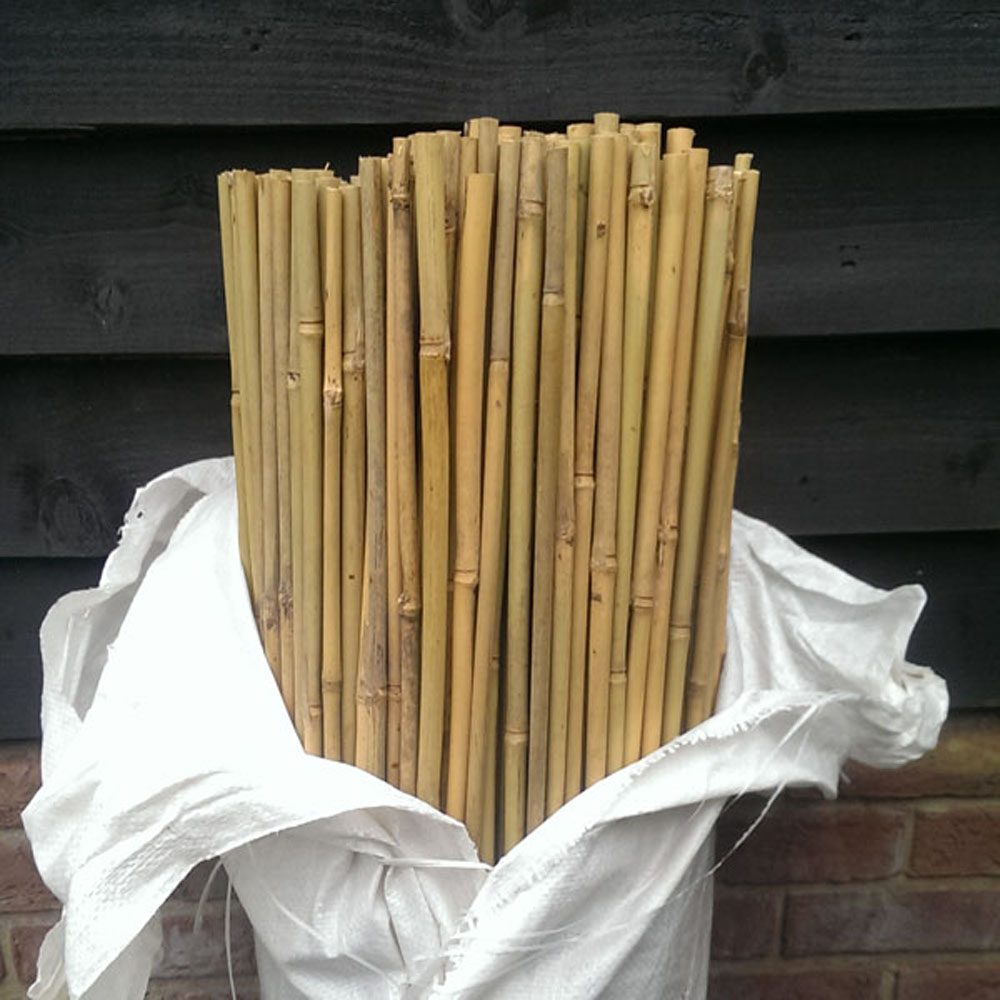
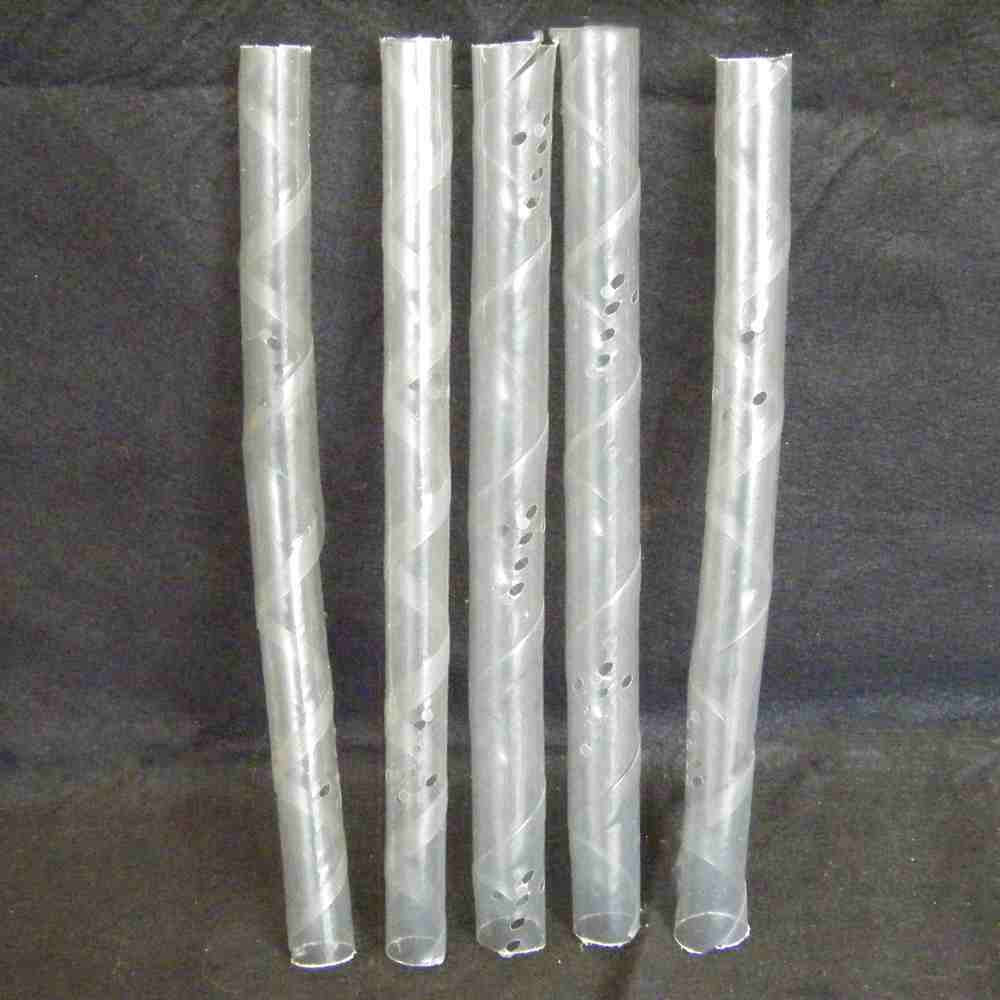

Bare root plants are only available during the dormant season, but you can pre-order them in advance. That way, you’re ready to establish your native hedge as soon as planting season begins.
1. A Guide to Bare Root: When does the season start?
2. A Guide to Screening Trees: Is Photinia Good for Natural Privacy?
3. A Guide to Pleached Trees: How effective are Hornbeam at creating privacy?
4. A Guide to Leylandii: Is it good for screening?
When installing your tree we recommend that you follow these planting tips to help your tree to thrive during the early stages of establishment.
Staking and tying is an essential step after planting as it helps to support young trees as they establish. For standard trees (around 8-10 feet tall), we recommend using 1.8m tall, 2-3 inch thick, round pointed tree stakes. This will minimise root and stem movement while allowing slight flexibility for root growth and eventual independence. We also suggest using a buckle-type tree tie with a spacer between the stake and the tree stem. This adjustable tie accommodates stem expansion. Please ensure the tree tie is nailed or stapled to the stake to prevent twisting in windy conditions.
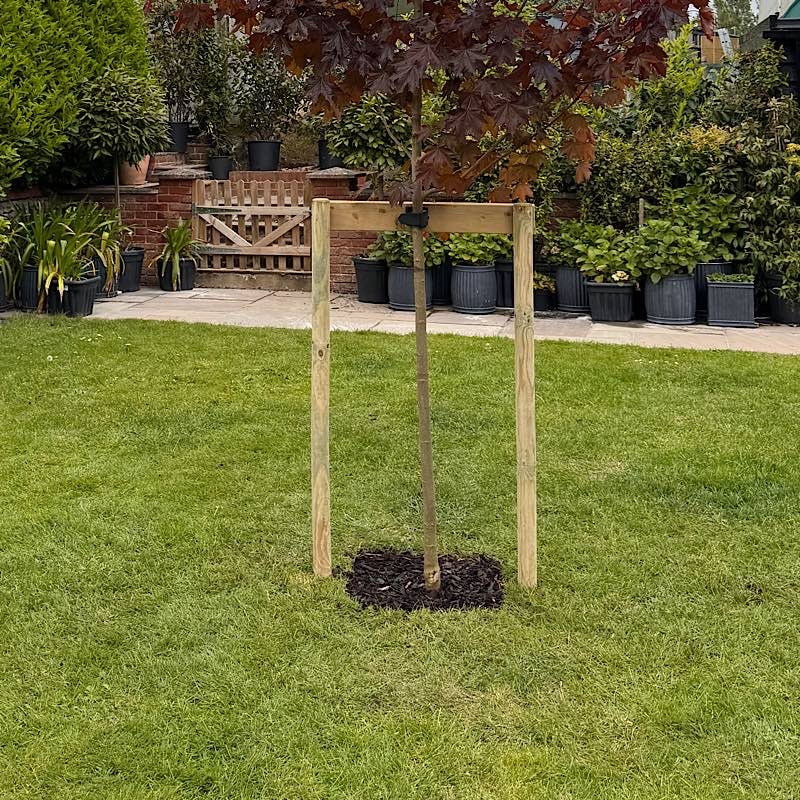
Our value planting packs contain the essential accompaniments to support your planting projects. These packs are available with various stake sizes to suit your needs, including 1.8m (6ft) stakes with a 60mm diameter, as well as 2.1m (7ft) and 2.4m (8ft) stakes with a 75mm diameter.
For larger trees or windier locations, our heavy-duty planting kit may be a better option. This kit includes two tree stakes, a tree pad, a buckle tie, and a crossbar. It is available with 6ft, 7ft, or 8ft stake options.
For planting advice check out our video planting guide.
Proper watering is essential for the growth and health of your new tree. During the growing season, regular watering is crucial to keep the surrounding soil moist. As a general guideline, we recommend giving young trees 5 litres of water every other day. However, this volume is just a guide and it’s important to monitor your tree closely and adjust watering as needed. The soil should be moist but not overly saturated.
For a more comprehensive guide, please refer to our article on watering newly planted trees.
Although these planting tips offer you advice on the essential steps to follow after installing your new tree, it’s important to remember that many factors can influence a tree’s health. Following these steps will give your tree the best possible start, but regular observation and timely intervention will help ensure that your tree continues to thrive and reach its full potential.
If you’re wondering if Photinia good for natural screening, the answer is a resounding yes. When it comes to creating privacy in the garden, especially in smaller spaces, Photinia ‘Red Robin’ stands out as one of the most effective and attractive solutions. Thanks to its shallow, fibrous root system, Photinia is ideal for tight areas and urban gardens where space is at a premium.
We recently helped a customer who had a newly constructed factory building suddenly appear behind their property, ruining the peaceful view from their rear garden. An all-too-common problem, they were looking for an affordable way to restore their privacy without compromising on aesthetics or taking up too much space.
Our recommendation was smaller-sized Photinia Red Robin standard trees. While these trees don’t offer immediate full coverage upon planting, they are fast-growing and offer excellent evergreen screening within a single growing season. This solution offered our client significant upfront cost savings and, with a little patience, the unsightly view was soon completely obscured.
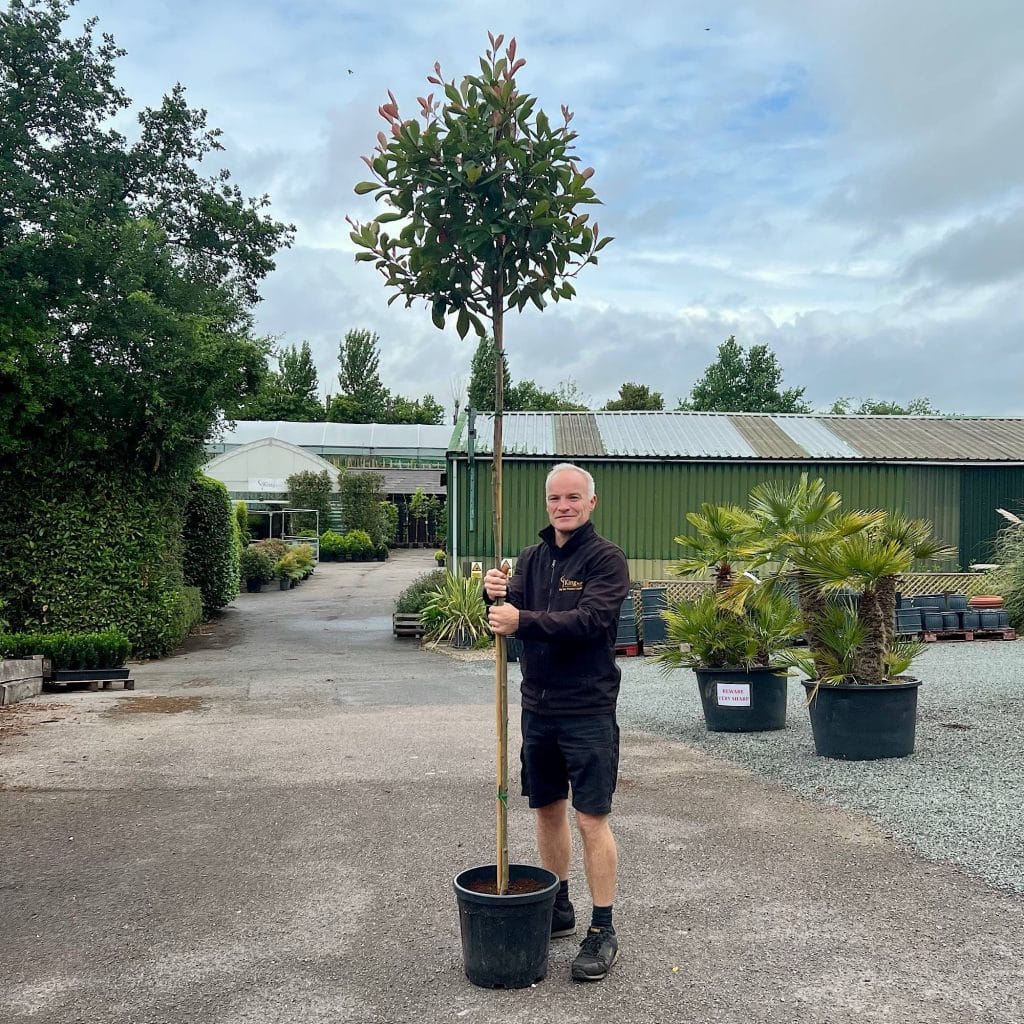

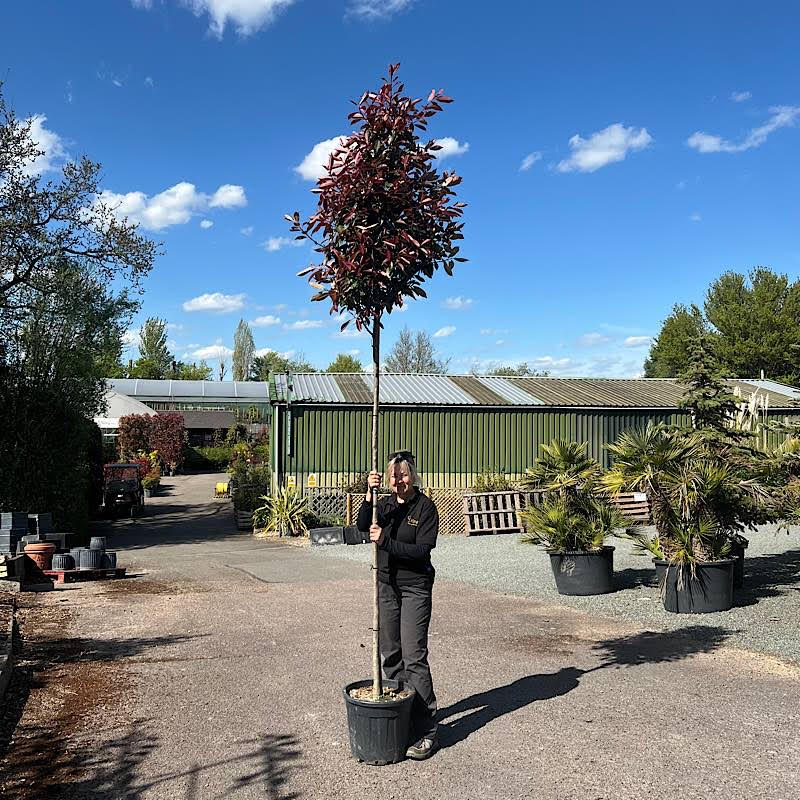
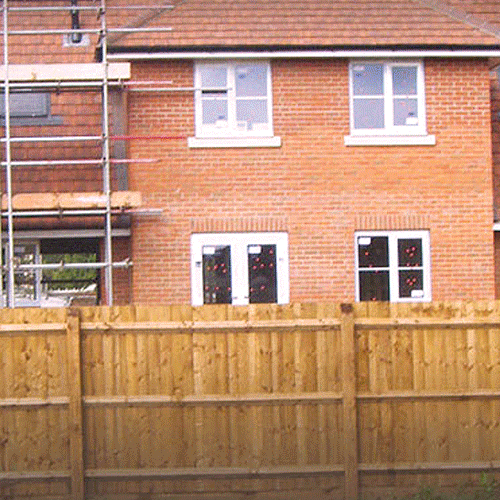
While Photinia is a popular and versatile choice, we also stock a wide variety of evergreen screening trees that cater to different tastes and garden conditions. Among our top alternatives:
Prunus laurocerasus (Cherry laurel): Dense, fast-growing, and highly effective for creating an instant privacy barrier.
Prunus lusitanica (Portuguese laurel): Smaller, darker leaves, perfect for formal gardens or contemporary landscapes.
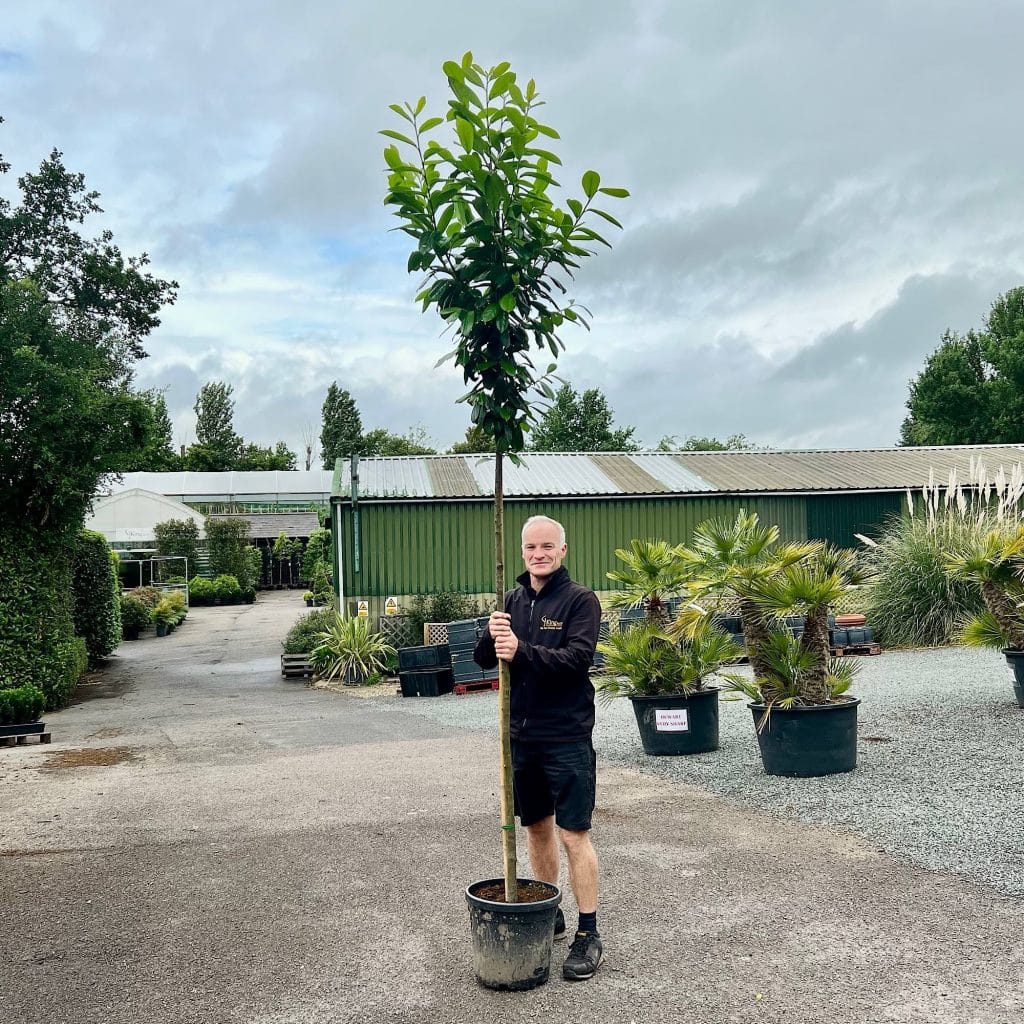
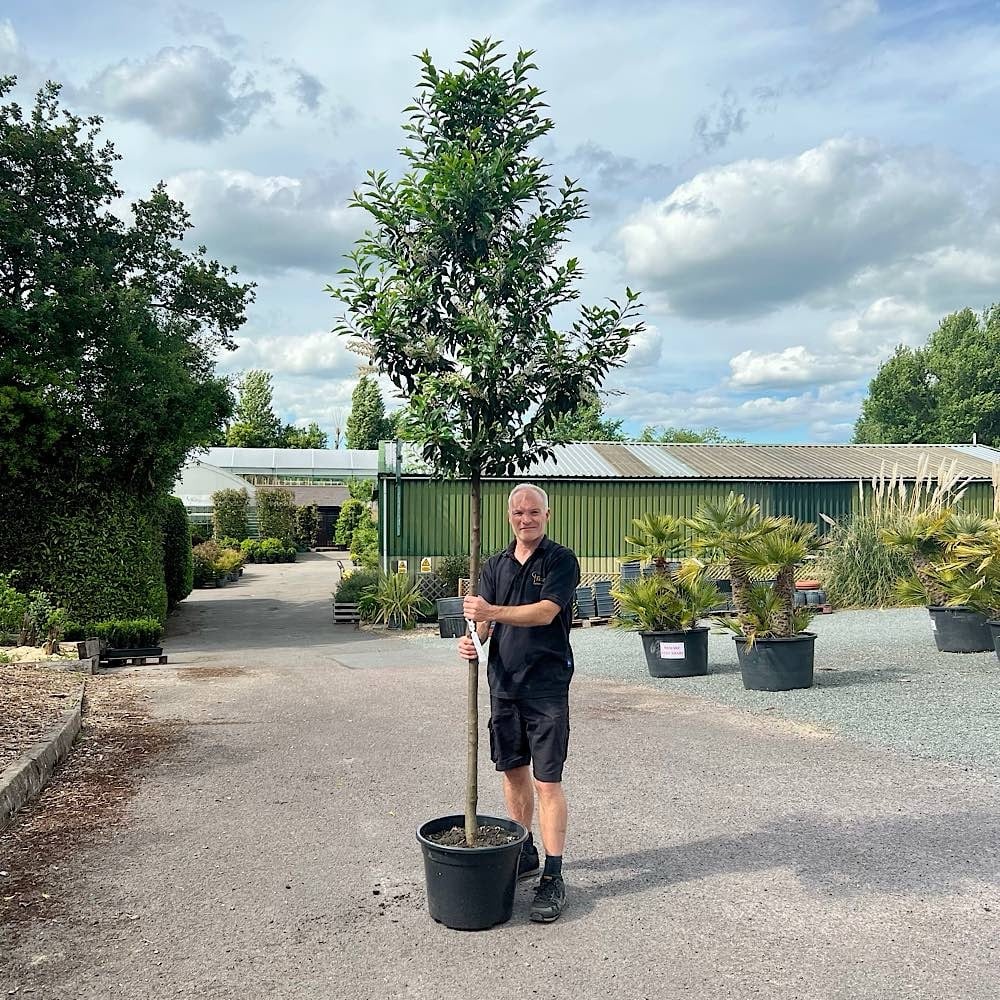
Pleached trees can also be an option if budget is not a concern and immediate privacy is the goal. These trees offer a smart, space-efficient solution as their foliage is trained to a frame. They are ideal for screening along fences, patios, or urban boundaries.
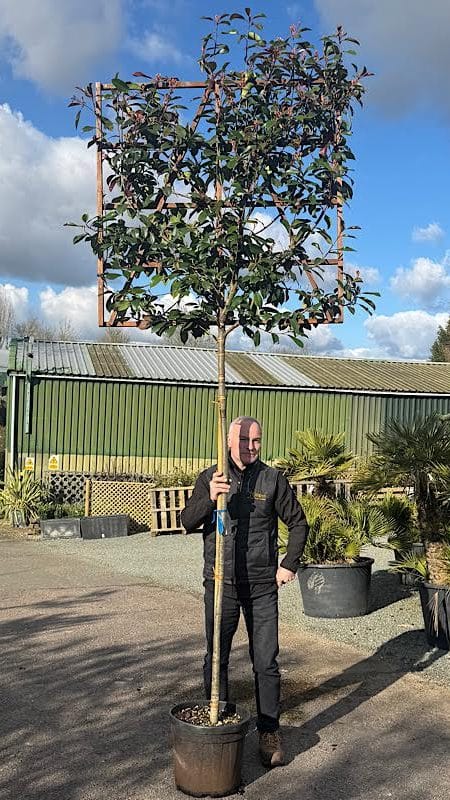
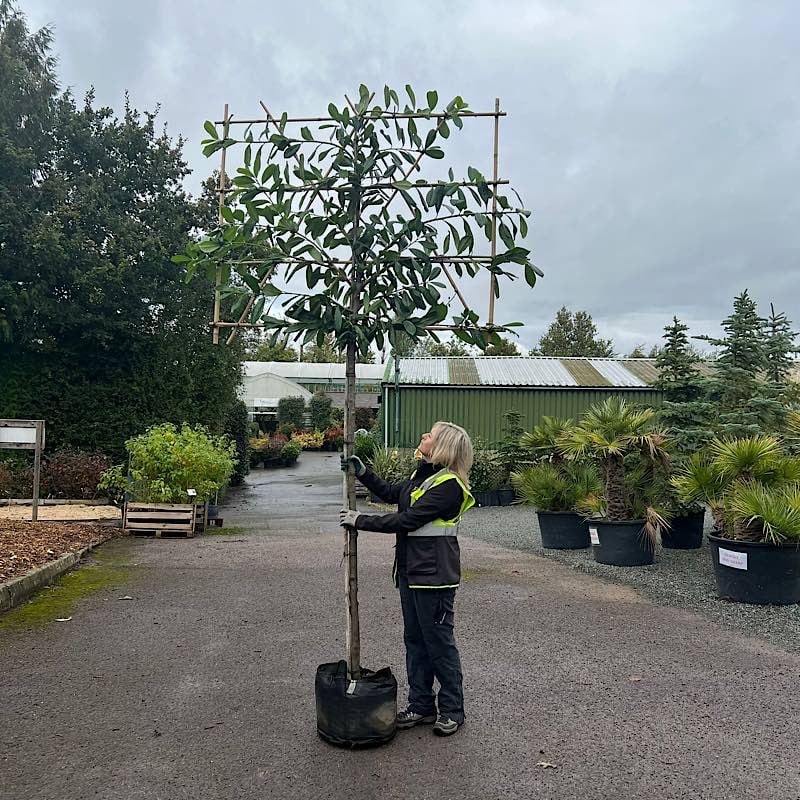
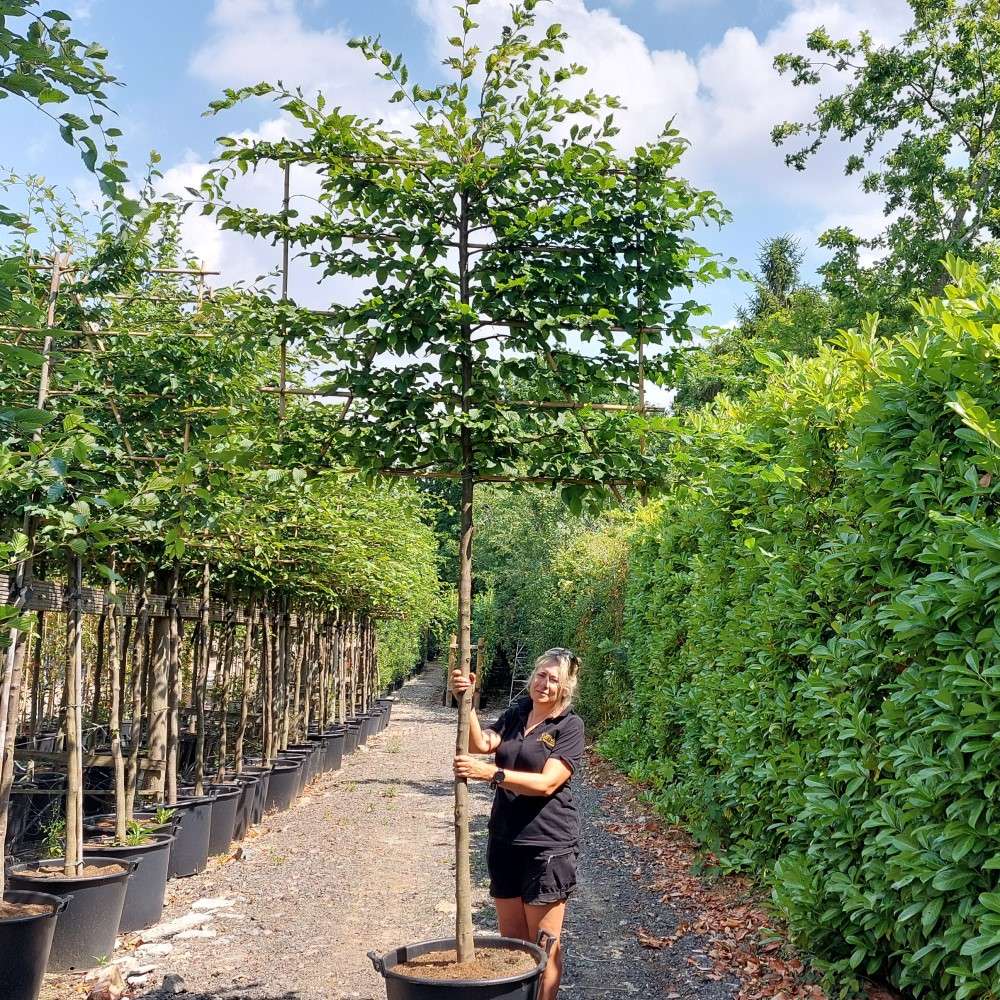
Still wondering is Photinia good for natural screening? Visit our website to see real project examples and explore our full range of screening trees. Whether you’re working with a compact urban plot or a large open space, our expert sales team is here to help you find the perfect solution to suit your needs and budget.
A Guide to Tree Planting: Is Summer a good time to plant?
Bare Root Planting Tips: How to establish a native hedge on a tight budget
A Guide to Pleached Trees: How effective are Hornbeam at creating privacy?
A Guide to Leylandii: Is it good for screening?
It is important that you know how to correctly plant trees in order to give them the best start in life. In this article we will give step by step instructions for planting container grown and bare root trees!
1. Digging the hole. If the soil quality is good you can dig a hole 25% wider than the rootball. You only need to dig a few centimetres deeper than the rootball to avoid planting the tree too deep. If you do this the tree can suffocates and ultimately fails. If the soil is poor quality it is a good idea to dig out a larger hole so that you can improve the soil quality before planting. Check out this article for advice on soil improvement.
2. Backfilling the hole. Once you have dug out the hole keep the excavated soil to one side and mix in some multi-purpose compost and organic matter (we recommend a 50:50 mix). Once you have removed the tree from its container, or bag, place the tree carefully into the planting pit to check the depth. Just add or take away soil if required. You can then backfill around the rootball with the soil mix.
3. Staking the tree. Staking and tying is an essential step after planting as it helps to support young trees as they establish. Correct staking will minimise root and stem movement while allowing slight flexibility for root growth and eventual independence. We also suggest using a buckle-type tree tie with a spacer between the stake and the tree stem. This adjustable tie accommodates stem expansion. Please ensure the tree tie is nailed or stapled to the stake to prevent twisting in windy conditions.
4. Water in your newly planted tree. Give the tree a good soak right after planting. This helps settle the soil and provides moisture for the roots.
Our value planting packs contain the essential accompaniments to support your planting projects. These packs are available with various stake sizes to suit your needs, including 1.8m (6ft) stakes with a 60mm diameter, as well as 2.1m (7ft) and 2.4m (8ft) stakes with a 75mm diameter.
For larger trees or windier locations, our heavy-duty planting kit may be a better option. This kit includes two tree stakes, a tree pad, a buckle tie, and a crossbar. It is available with 6ft, 7ft, or 8ft stake options.
1. Dig out the tree pit. Make sure the hole is large enough to accommodate the roots.
2. Mix some soil improver ready for back fill. Combining soil from the hole with soil improver or compost will help add nutrients and improve drainage (we usually recommend a 50:50 mix).
3. Put the stake in the ground. Place a sturdy stake next to where you’ll plant the tree and drive it firmly into the soil.
4. Plant the tree and backfill. Place the tree next to the stake and fill the hole around the roots using the soil and improver mix.
5. Heal the tree in firmly. Press the soil firmly but gently around the roots to keep the tree stable and ensure good root-soil contact.
6. Fix the buckle tie. Use a buckle tie to secure the tree to the stake. This keeps the tree upright and protects it from wind damage.
7. Add a mulch to prevent weed growth. Spread a layer of mulch around the base of the tree. Mulch helps retain moisture and stops weeds that compete for nutrients.
8. Water in your newly planted tree. Give the tree a good soak right after planting. This helps settle the soil and provides moisture for the roots.
Maintain a regular water schedule over the first few growing seasons to keep the soil moist. Hopefully this has helped to explain how to correctly plant trees. If you have any questions please contact us, or check out this article for more tree care tips!
Pleached Photinia Red Robin: A Stunning Screening Solution
What trees are best for new build gardens?
Visit Our Nursery to Pick your Own Trees!
Autumn is a good time to plant trees because the soil stays warm enough to encourage roots to grow before winter. This early root development helps trees cope with the following summers heat and dryness. With regular care and watering you can plant container-grown trees at any time (even in Summer). But if that’s not possible, it’s better to wait for cooler autumn weather!
You’ll also find that the trees available in autumn are often taller and more established. Many have grown through the summer, so they’re fuller and denser by the time autumn arrives. Cooler weather also expands your planting options. During the growing season, you’re limited to container-grown plants. But once dormancy begins, bare root and rootball trees become available. These options are often more affordable, especially for hedgerows and larger planting projects.
As mentioned earlier, we stock container-grown, bare root, and rootball plants during the dormant season. Here’s a quick guide to their differences, key features and benefits:
1. Container grown. Used to describe plants that are grown and fully rooted in pots. You can plant them any time of year, it just best to avoid planting in freezing or extremely hot conditions. They’re easy to handle and reliable. However, they tend to cost more because of the time and materials needed to grow them.
2. Bare Root. These are plants that are grown in a field and are lifted without any soil on the roots. They’re lightweight, easy to transport, and more affordable. Delivery costs are usually lower, and they’re ideal for mass planting. They’re only available when dormant and must be planted quickly. A small failure rate (around 5%) is normal with bare root planting.
3. Rootball. Rootball plants are also field-grown but lifted with a ball of soil around the roots. Some larger plants and evergreens don’t do well as bare root so they are supplied this way instead. Rootballs cost more than bare root but are often cheaper than container-grown trees. They’re also heavier, so delivery may be limited by size or weight.
These plants are usually available from November to March, but the exact start of the season is dependent on the soil temperature. This is because the soil needs to be cool enough to ensure the plants are not actively growing when they are lifted!
In conclusion, autumn is a great time to plant trees, whether you’re using bare root, rootball, or container grown stock. The cooler weather opens up more planting options and makes early care easier. Don’t forget, you’ll still need to water regularly during the first growing season!
What is a Container Grown tree? A guide to tree terminology
How to Water Newly Planted Trees
The Best Practices for Irrigating Trees!
Here’s our run down of our favourite screening trees suited to creating a beautiful natural privacy screen. Some of the trees can also be grown as a smaller hedge, but we’ve focused on varieties that can get to the height required to reach above your garden fence and give you greater privacy. Each has its own benefits (most are evergreen trees) and of course we all have different tastes, so the perfect screening tree really depends on what you want, not just what we think!
A good choice of screening trees for smaller gardens. This small semi evergreen tree is a real beauty with glossy pale green/cream variegated leaves bearing white panicles of flowers in late summer. Compliments period homes very well. More about Chinese Privet Trees
You might think of magnolia as a dense shrub, but it can also be purchased as a standard tree with a clear 2M stem. Magnolia Grandiflora has magnificent saucer shaped cream flowers with dark purple stamens and a delicate scent, a beautiful site throughout Summer and into Autumn. The bonus for screening purpose is that this hardy, evergreen variety will retain its foliage throughout the year. King and Co can ship Magnolia trees nationwide through its online shop. More about Magnolia Grandiflora Tree
Grown in United Kingdom from as early as the 1500s, also known as the Holly Oak which relates to its sharply serrated leaves. A slightly unusual but one of the most interesting screening trees, with yellow catkins in spring followed by acorns. Resistant to salt laden winds, pollution and drought, so ideal for cities and seaside gardens. Also known as Evergreen Oak, which grows exceptionally well on Essex clay soils. More about Holm Oak Trees.
Another good choice of screening tree if you have a smaller garden, Japanese Privet can be clipped to keep it small. Perfecting for creating privacy without encroaching on the rest of your garden. Even with just one tree, it can be strategically placed to provide cover from unsightly views or privacy from people looking in. More about Japanese Privet Trees
This bamboo grows tall, up to 8m high with green stems and golden green/yellow leaves. A beautiful site that creates a wonderful soothing sound as it gently sways in the wind. Golden bamboo is evergreen, so will hold its leaves all year, which means all year round screening. More about Golden Bamboo.
Another bamboo, offering a more eye catching alternative to the Golden Bamboo above. In the second/third year of growth you’ll be rewarded with striking black bamboo canes, a gorgeous contrast to the bright green leaves. As with all bamboo, you’ll get fast results from this rapid growing plant. More about Black Bamboo
A hugely important tree to the UK, the Hornbeam is a majestic masterpiece. It’s not evergreen, but what you lose in winter coverage you will gain in wonder as it bursts into greenery come the spring and then changes to splendid yellow and orange colours during the Autumn months. King and Co can supply ‘pleached’ and upright forms of Hornbeam to suit your needs. More about Hornbeam Trees
You’ve heard the horror stories of evasive Leylandii trees, but that’s only due to neglect. They’re easy to maintain and this golden variety is a real stunner. You can’t get much denser for screening purposes, which means it can also be used to cut out traffic noise. Win Win! More about Leylandii Tree
When you see the sun hit glossy Laurel leaves you’ll understand why we’ve placed this right up our chart. They’ll stay just as shiny throughout the winter and only need trimming once or twice during the summer. The foliage is also very dense so you can be sure of an effective screen. Lined up one by one as pictured here they look incredibly elegant and will enhance any garden. Laurels are the fastest growing of our selection, being particularly hardy and well suited to Essex clay soils. More about Laurel Tree
We have no hesitation in ranking this, our favourite, of the screening trees, everything you need, plus a little extra. The dense evergreen tree will give you an all year round privacy tree, it can be supplied as a standard tree or as a dense shrub. It has plenty of height, growing up to 5m tall… but to top it all it has the most beautiful dark green leaves that combine with flashes of red. Perfect for brightening up a winter garden, the red colouring becomes even more striking in the spring/summer months when the new foliage comes through. So for a mix of practically and interest throughout the year, then we’d pick Photinia. We now stock Photinia trees for raised beds! More about Photinia
If you’d like some expert advice on picking suitable screening trees then please don’t hesitate to get in touch or drop into the tree nursery. Similar to a garden centre, our tree experts can recommend planting accessories such as fertilisers and soil improvers to ensure the best start for your new trees. Have a look at our evergreen trees below!
1. A Guide to Screening Trees: Is Photinia Good for Natural Privacy?
2. Best Trees for Privacy: Before and after planting!
3. 10 Trees for Small Gardens!
4. Tree Planting Kits: Give your newly planted tree the best start!
5. How to Water Newly Planted Trees
We often get asked, “How do you plant a bare root tree?” during the bare root season. Bare root trees are popular because they cost less and have lower delivery charges. However, their exposed roots and lack of a container can feel intimidating. To help your tree get off to a great start, follow these simple steps or watch our video guide!
1. Dig out the tree pit. Make sure the hole is large enough to accommodate the roots.
2. Mix some soil improver ready for back fill. Combining soil from the hole with soil improver or compost will help add nutrients and improve drainage (we usually recommend a 50:50 mix).
3. Put the stake in the ground. Place a sturdy stake next to where you’ll plant the tree and drive it firmly into the soil.
4. Plant the tree and backfill. Place the tree next to the stake and fill the hole around the roots using the soil and improver mix.
5. Heal the tree in firmly. Press the soil firmly but gently around the roots to keep the tree stable and ensure good root-soil contact.
6. Fix the buckle tie. Use a buckle tie to secure the tree to the stake. This keeps the tree upright and protects it from wind damage.
7. Add a mulch to prevent weed growth. Spread a layer of mulch around the base of the tree. Mulch helps retain moisture and stops weeds that compete for nutrients.
8. Water in your newly planted tree. Give the tree a good soak right after planting. This helps settle the soil and provides moisture for the roots.
We hope this helps you plant your bare root tree with confidence. If you have any questions, please contact us. We’re always happy to help!
A Guide to Planting Bare Root Hedging
How Do Accessories Protect Bare Root Plants?
When to Plant Bare Root and Rootball Trees?
Over the past two decades, we’ve seen some of the wettest years on record. In 2013, 2015, and 2023, heavy rainfall disrupted many outdoor projects. One major issue we’ve noticed is how wet weather affects soil conditions with many customers asking us if they can plant in compacted soil.
The short answer is no. Compacted soil reduces air pockets, slows drainage, and blocks nutrients. These conditions make it hard for tree roots to grow. However, there are ways to improve compacted soil and make it suitable for planting.
Prolonged rainfall can lead to waterlogged ground, especially in areas with heavy clay. Once this soil dries, it often becomes hard and compacted. To plant successfully in these conditions, you need to loosen the soil and add organic matter. Here’s how.
1. Break up the subsoil. If the soil isn’t too bad you can break up the clay subsoil and mix in organic matter like multi-purpose compost or well rotted animal manure. Loosening the subsoil improves aeration and drainage while organic matter will help to improve the soil structure and increase nutrient content!
2. Completely replace the existing soil. If the existing soil is extremely poor you could completely replace the existing soil and fill the hole with a mix of good quality topsoil, multipurpose compost and well-rotted manure. This is more drastic but it is a necessary step.
Adding 2–3 inches of pea shingle to the bottom of the hole would further improve drainage as it would allow water to flow through better.
If you’ve already planted trees in clay soil with minimal preparation and are noticing signs of compaction after wet weather, don’t worry, there are steps you can take to improve conditions:
1. Aerate the soil around the base. Use a garden fork to gently create holes around the base of the tree. Ease the fork back and forth to open up the soil and create space for air and water.
2. Fill holes to keep them open. Apply a liquid feed into the holes. Then fill them with sharp sand or compost. This keeps the holes open so that air and nutrients can access the roots.
3. Mulch the surface. Sprinkle a granular feed on the surface. Then apply mulch to retain moisture and block weeds. Don’t pile mulch directly against the trunk.
Once you have improved the soil structure it is also important that you water your trees regularly. Regular irrigation over the growing season will help to keep the soil moist. Young trees need consistent moisture because their roots struggle to absorb water and nutrients from the soil. When the soil stays moist, the roots spread and strengthen to support healthy growth. Want more tips? Check out this article!
So, can you plant in compacted soil? It is not advisable without preparation. But by loosening the soil, improving drainage, and caring for the tree afterward, you can succeed. If you’re unsure where to start, contact our sales team. We’re happy to offer advice on planting in difficult soil conditions.
Planting Trees in Summer: Can you do it?
Trees for Natural Summer Screening: Our favourite candidates for privacy and shade!
How to plant a tree grown in a container – a professional guide!
You can buy trees, hedging, shrubs and topiary online by browsing our website.
If you do not see a plant or size that is suitable for you then please call as we stock a wide variety of plants in our tree nursery. It’s worth noting that many other websites sell other people’s stock (i.e. they act as an agent) so you cannot view the products at their own site. At King & Co, all of our advertised plants are available for viewing at our tree nursery in Rayne, near Braintree, situated just over an hours drive out of London.
Our knowledgeable and experienced tree nursery staff are always contactable via phone on 01376 340469 or if you have any questions regarding any of our trees or accessories.
If you cannot see what you require on our website, please complete the enquiry form. We will give it our urgent attention and will get back to you shortly with a solution that meets your needs.
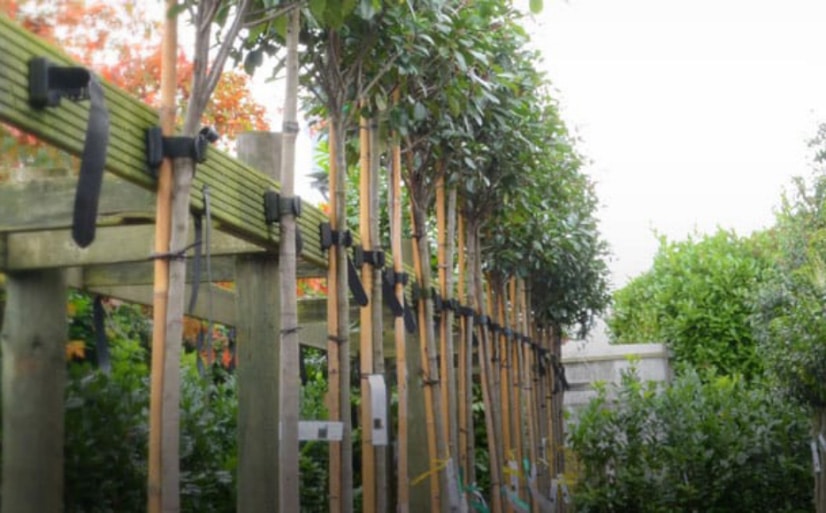
If you are looking for specific evergreen trees, Photinia, Leylandii hedging, Leylandii trees, instant hedging or shrubs, use the search bar at the top of the page